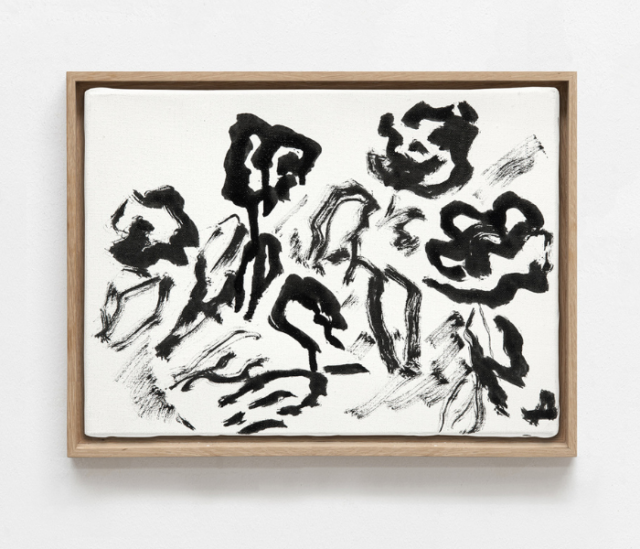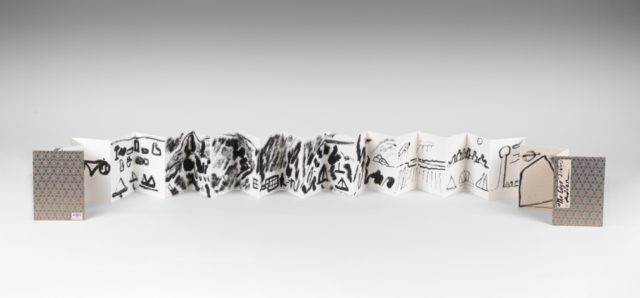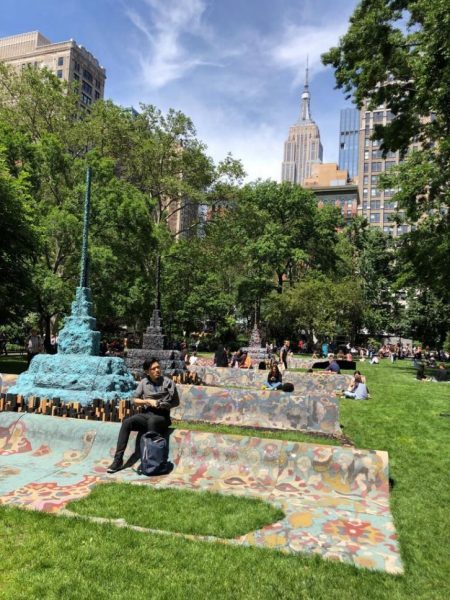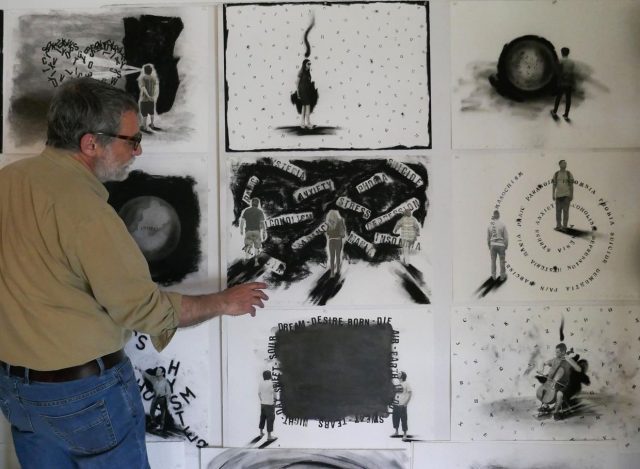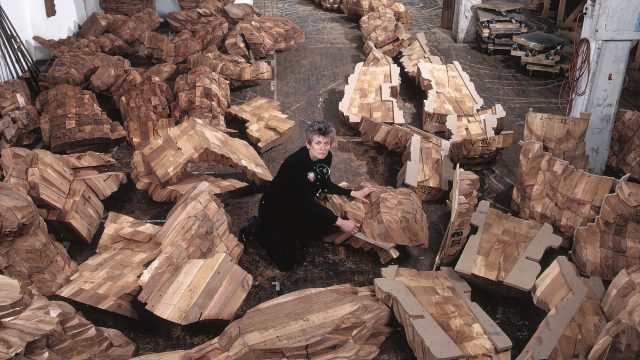
The life and career of Ursula Von Rydingsvard are detailed in intimate documentary
URSULA VON RYDINGSVARD: INTO HER OWN (Daniel Traub, 2019)
Opens virtually May 29, $15
Live YouTube Q&A May 31, free, 5:00
filmforum.org
intoherownfilm.com
I have spent many an hour experiencing the unique work of sculptor Ursula von Rydingsvard, walking around her dazzling large-scale wood sculptures at Galerie Lelong and art fairs, outside the Barclays Center, and in Madison Square Park. But it wasn’t until watching Daniel Traub’s hourlong documentary, Ursula von Rydingsvard: Into Her Own — which opens virtually May 29 on Film Forum’s website — that I have come to understand and appreciate her work that much more.
“She is using her own experiences to think about how abstract forms can be evocative and representative of what the human condition is,” arts writer Patricia C. Phillips says in the film. “It’s indisputable that there’s something about Ursula’s process that makes the work incredibly distinctive. And just continuing to pursue that with more and more depth and persistence over the years, it reveals some answers but always this feeling that there is also something being withheld.”
Von Rydingsvard was born in Germany in 1942 to a Polish mother and a severely abusive Ukrainian father; the large family lived in a displaced persons camp after the war, mired in poverty, struggling to survive in makeshift homes where everything was made from wood. “It was just the board between me and the outside world, and I recall my body being right next to the wall, and I could smell, I could feel,” von Rydingsvard remembers about the camp. “And there was a huge difference between what happened within this wooden structure and what happened outside of it, so that there was a kind of safety the wood gave me.”
The family immigrated to a blue-collar town in Connecticut in 1951, where she learned little about art and suffered severe emotional and physical abuse at the hands of her father. She married, moved to California, and had a daughter, Ursie, but left her abusive husband with help from her brother Staś Karoliszyn and moved to SoHo in 1975, determined to become an artist. “Going to New York City woke me up in a way that was jarring and marvelous,” she says. She eventually adopted a labor-intensive process of marking, cutting, and stacking cedar two-by-fours into masterful sculptures with a dedicated team of holders, runners, cutters, and fabricators, forming their own family; they even eat lunch together every day. Traub, who directed, produced, and photographed the film, speaks with such studio personnel as Ted Springer, Vivian Chiu, Morgan Daly, and Sean Weeks-Earp while showing the detailed, grueling yet clearly satisfying work they perform.
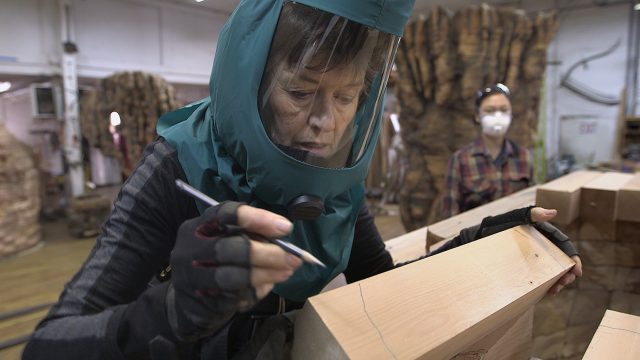
Ursula Von Rydingsvard has built her career primarily working with cedar via a laborious process
“Her process is almost medieval,” says Mary Sabbatino, owner of Galerie Lelong, von Rydingsvard’s longtime New York gallery. Traub traces von Rydingsvard’s career from St. Martin’s Dream in Battery Park and Song of a Saint (St. Eulalia) in Buffalo, both from 1980, through a recent Princeton University outdoor commission for which she would be using copper for the first time. She had seen Traub’s short film Xu Bing: Phoenix and so invited Traub to document her 2015 Venice Bienale installation, Giardino Della Marinaressa. That became a short film, and they then decided to collaborate again, documenting the making of the Princeton commission, which led to Into Her Own.
Such friends and colleagues as artists Elka Krajewska, Sarah Sze, and Judy Pfaff, patrons Agnes Gund and Lore Harp McGovern, and Whitney Museum director Adam Weinberg dig deep into von Rydingsvard’s almost proprietary use of materials, her distinction as a rare woman artist creating monumental sculpture, and the concept of time in her oeuvre. Touch is also key, from the many assistants who handle the wood, bronze, and copper in the construction of the work to the people who approach and feel the final product, something she encourages. There’s a wonderful scene in which von Rydingsvard speaks with her beloved second husband, Nobel Prize winner Paul Greengard, discussing nature, beauty, and her Polish heritage. Her daughter tells stories of growing up surrounded by her mother’s process and art, and Von Rydingsvard and Karoliszyn share intimate, frightening details of their father’s abuse as she explains how she was able to turn that pain around to figure out who she was and what she wanted out of life. “I knew I needed to do my work to live,” she says.
I can’t wait until I get outside and see von Rydingsvard’s work again, in person, with this newfound knowledge and understanding of an extraordinary artist. In the meantime, I’ve already watched the documentary twice, inspired by her continuing story.
Traub, a New York-based photographer who codirected the 2014 film The Barefoot Artist (about his mother, artist, activist, and teacher Lily Yeh), and von Rydingsvard will take part in a free, live Q&A with moderator Molly Donovan of the National Gallery of Art on May 31 at 5:00, hosted by Film Forum.
